| Japanese | English |

Link
The latest Contests
・LSI Design Contest 2016Past LSI Design Contests
・LSI Design Contest 2015・LSI Design Contest 2014
・LSI Design Contest 2013
・LSI Design Contest 2012
・LSI Design Contest 2011
・LSI Design Contest 2010
・LSI Design Contest 2009
・LSI Design Contest 2008
・LSI Design Contest 2007
・LSI Design Contest 2006
・LSI Design Contest 2005
・LSI Design Contest 2004
・LSI Design Contest 2003
LSI Design Contest in OKINAWA (2009)
How to boost semiconductor industry in Asia
Abstract-This correspondence introduces a student LSI design contest http://www.LSI-contest.com/ which is annually held at Okinawa in March. Year 2009 contest was 12th anniversary. Applicants are not only from Japan but also from all over Asian countries. The main purpose of this contest is to develop LSI design skills for college students. This correspondence introduces LSI design contest from various aspects such as background, history, finance, attendees, design topics and incidental forum. From these facts, we try to find the way how to promise boosting semiconductor industry and business in Japan as well as in Asian countries in future.
I. INTRODUCTION
Okinawa, which is the most southern prefecture in Japan, has suffering from economical crisis since it has returned to Japan from US in 1972 due to some reasons such as far location from mainland, few manufacturing industry, and so on. Even we look at the economical situation other than Okinawa; all other areas have also been suffering from world wide recession since summer 2008. In order to stimulate Okinawa economy, the University of the Ryukyus, computer science department in college of engineering, has launched a student LSI design contest since 1998. It was 12th annual contest on March 15th, 2009. The main purpose of this contest is to develop LSI design skills for college students. This could promise boosting semiconductor industry and business in Japan as well as in Asian countries in future.
The LSI design contest, http://www.LSI-contest.com/, has two features. One is a forum session and the other is a student contest itself. At a forum session, we invite some business persons to have them some talks on ICT based business trends and some related economy topics. An LSI contest is held followed by a forum session. This annual design contest has some unique features such as given a formal award from IEICE.
In this correspondence, Chap 2 describes on the history and purpose of the LSI design contest. Then Chap.3 shows year 2009 contest topic and results. In Chap.4, we discuss on how to achieve promising future with LSI design education through some activities including this contest. Chap.5 gives about a concluding remark and future works.
II. BACKGROUND AND PURPOSE OF LSI DESIGN CONTEST
A. Okinawa Economy Situation
Okinawa is only one place in Japan where US army actually landed and had unthinkable severe damage by armed attack at the end of the World War II 1945. According to the statistical fact by the Cabinet office [1], the Okinawa?fs prefectural GDP in year-2006 is as low as 2.09Million yen comparing with 4.82 Million yen that of Tokyo or even with 3.07 Million yen that of the average all over prefectures in Japan. The major reasons of low GDP in Okinawa might be thought as follows;
1) The return of Okinawa from U.S.A. to Japan was year 1972.
2) Less manufacturing industry.
3) Far location from mainland Japan
4) Low percentage of students enrolling to university or college. Okinawa; 34 %, Average of all prefectures; 56%
5) High unemployment rate. Okinawa: 8%, Average of all prefectures; 5% Especially the unemployment rate for age 15-24 is as high as 19% at year 2004.
6) Huge occupied area by US military bases; more than 70bases in Japan are just located in small island Okinawa.
Above those reasons could be mutually related each other. In any cases, economical stimulus plans are highly necessary so that various such government and prefectural plans with huge amount of budget have been invested in Okinawa so far. For example, other than tax money allocated to local prefectural government (地方交付税), Okinawa receives three other huge budgets. First one is the 4th Okinawa economy stimulus plan (第4次沖縄振興策) amounted as high as 339 billion Yen in year 2002 only, which is maintaining from 2002 till 2011 [2]. Second one is called“ north part Okinawa stimulus plan ”(北 部振興策) whose total amount is 100 billion Yen for 10-year from 1999 till 2009 [3].
The last one, which is not for a local government budget but for those who has expropriated land for US military bases, is real-estate lending fee for US military bases, for which as much as 90 billion yen is paid annually by Japanese government to such owners based on the Japan-US Security Treaty. Nonetheless above extremely huge amount has been invested in Okinawa so far, its GDP is still lowest among other prefectures. Why?
B. Purpose of LSI design contest
In order to stimulate Okinawan economy, the University of the Ryukyus, computer science department in college of engineering, has launched an annual student LSI design contest since 1998. The main purpose of this contest is to develop LSI design skills for college students. This could promise boosting semiconductor industry and business in Japan as well as in Asian countries in future. The committee also encourages them to establish design venture companies in Okinawa.
This annual design contest has unique features as follows;
1) The design topic and specification are given in advance.
2) Peer reviewed 10 candidate teams are invited to Okinawa to have final competition by the organizing committee fs budget.
3) Champion team will be officially awarded from IEICE Smart Informedia System technical group. 2nd and 3rd runners-up teams are also awarded by sponsor companies.
C. History of LSI design contest
-1 Applicants
Fig.1 shows number of applicants in recent 12-year. In this several years, 70 to 80 students have been applied. In year 2009, the number of foreign applicants has been decreased; however, the number of domestic applicants has been increased so that the total number of applicants has been able to maintain as usual.
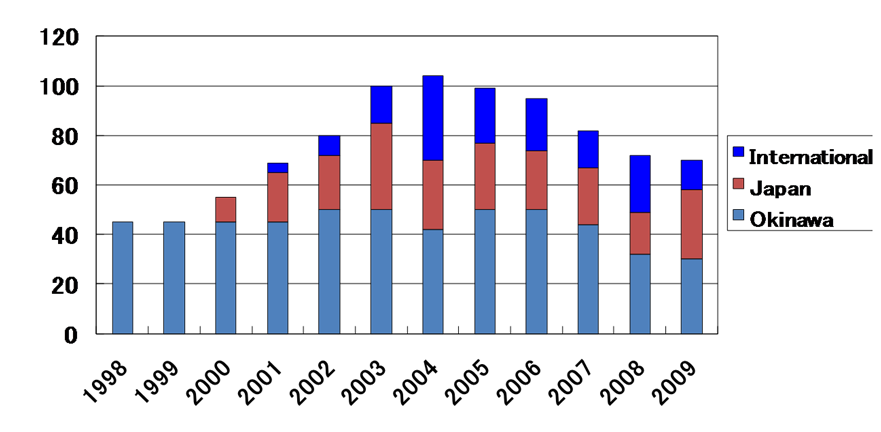
Fig. 1. Number of applicants for LSI design contest in Okinawa
-2 Finance
For first several yeas, Synopsys had financially supported this contest so that the University of the Ryukyus, computer science department in college of engineering was able to prepare infrastructures such as work stations and EDA tools for LSI design education. It also has been partially used for the LSI design contest. From year 2005 till 2008, Sony LSI Design co.ltd had become a main sponsor.
We, however, have encountered the serious financial problem in year 2009 since the most of sponsor companies have been declined budget support due to the recent world wide recessions. Fortunately, Xilinx co.ltd has kindly declared to become a main sponsor in year 2009 including some other companies such as Radrix co.ltd, Tokyo Electron Devices co.ltd and Raytron co.ltd. In addition, Kyushu Semiconductor Innovation Association, which is an affiliated organization of Ministry of General Affair Kyushu branch, and From Okinawa, which is an affiliated organization of Okinawa prefecture, have continuously been supporting to the contest regardless of the recession.
-3 Design contest and its Awards
The list of design topic is shown in Table.1. Most of the targets are related to signal processing or information theory. The committee offers two categories for design. One is introductive specification for new comers such as freshmen or sophomore. Another category is more advanced specification for skilled students such as seniors and graduate students.
A peer review is made for preliminary selection of top 10- team among all applicants. The preliminary selected top 10 teams are invited to Okinawa in March and are supposed to make a final presentation. The contest committee selects 3 top teams according to their presentation and design reports. Two top teams can receive either an academic achievement award supported by the IEICE Smart Informedia System technical group, or a practical achievement award supported by the Semiconductor Industry Newspaper co.ltd. 2nd runners-up team can receive Xilinx co.ltd award.
TABLE I : DESIGN TARGET

TABLE II : LIST OF FORUM/SYMPOSIUM

-4 Forum and Symposium session
Along with the design contest, the committee offers a key-note speech and forum/symposium session. The list of forum session is in Table.2. The main purpose to have such forum or symposium is to stimulate the motivation for young engineers in Okinawa including students as well as citizens and especially for government/prefecture/city office staffs who are devoted in economical stimulus plan.
-5 Organizing committee and judge members team
In year 2009, the Organizing committee comprises of Prof.Hiroshi Ochi, Kyushu Inst. of Tech. as a chairperson, Prof. Tomohisa Wada, University of the Ryukyus, as a contest judge members chair, Prof. Takeo Yoshida, University of the Ryukyus, and Prof.Masayuki Kurosaki, Kyushu Inst. of Tech.
A contest judge team comprises of Prof.Masahiro Fujita, University of Tokyo, Prof. Kenji Taniguchi, Prof. Takao Onoye, Osaka University, Prof. Ryuji Suzuki, Prof. Chinami Kaneshiro, Okinawa College of Technology, Prof, Sarwono Sutikno, Bundun Inst. of Tech. in Indonesia, Prof. Kanghyeon Rhee, Choson University in Korea ,and some from sponsor companies.
III. DESIGN CONTEST TOPIC AND RESULTS IN 2009
A. Design Task
The design task of this year 12th LSI design contest is simple Micro Processor design. This task gives a good chance to study or review the computer architecture for students.
Since the task is designed for students, the basic task of the processor design only includes 9 instructions set. The instruction set is determined to execute some interesting algorithms such as Bubble Sorting. Then unconditional jump and conditional jump (branch) instructions are also included. The supported nine instructions are summarized in Table 3.
Figure 2 shows the design target SRP architecture. This architecture is of course not original. Just 9 instructions are extracted from the RISC computer in the book“COMPUTER ORGANIZATION DESIGN: the hardware / software interface ” by Professors Hennessy and Patterson [4]. Then the SRP also have a feature of RISC computer such as 32 bit width by 32 word Register file.
One design example of SRP is explained as shown in figure 3. One instruction per one cycle operation is assumed. Instruction ROM is also assumed to output one instruction according to word address input signal.
Register file uses ra1 and ra2 register address input signals. According to ra1 and ra2, register file outputs data to do1 port and do2 port respectively. The wa is address signal for write register file location and the written data is inputted to din port. When write signal is asserted (=1), the data will be written at Clock rising edge.
ALU does the operation of add, sub, and, or. In addition, ALU check whether its output (result) is zero or not (zero). For slt operation, ALU performs subtraction and by checking zero-flag, slt can be implemented.
Instruction sw needs data memory write operation and instruction lw needs data memory read operation.
The triangle mark in the figure 3 indicates Clock inputs. At only Clock rising edge, all flip-flop data update are performed. Then the circuit block without the triangle mark is combinational logic circuits.
A“ ”means bit concatenation. A“ + ”means adder. An “ MUX ”means multiplexer. An“ SE ”is the 16 bits to 32 bit expansion with sign bit.
TABLE III : SUPPORTED INSTRUCTIONS
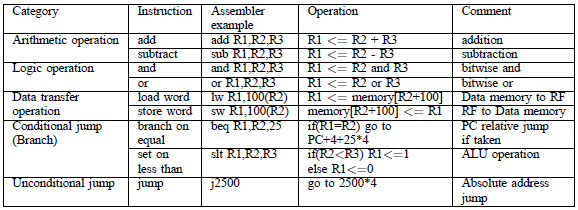
TABLE IV : DESIGN CONTEST CONFERENCE PARTICIPANTS
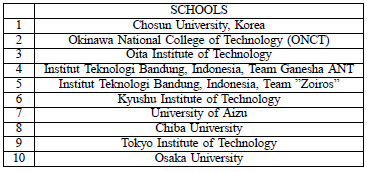
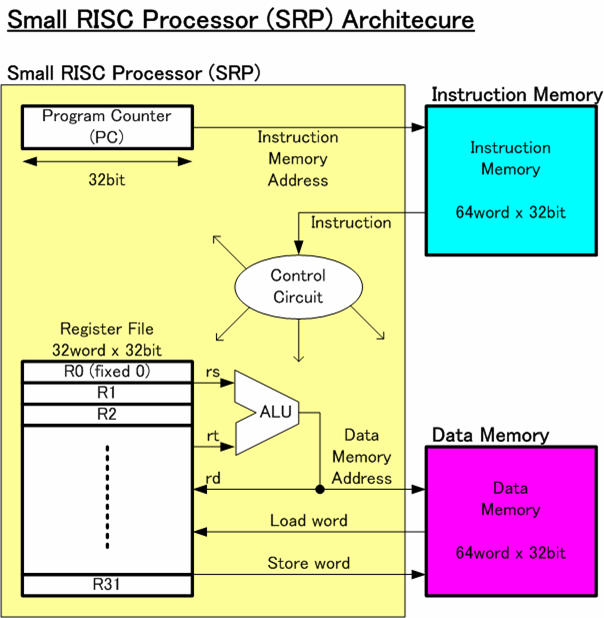
Fig. 2. Small RISC Processor Architecture
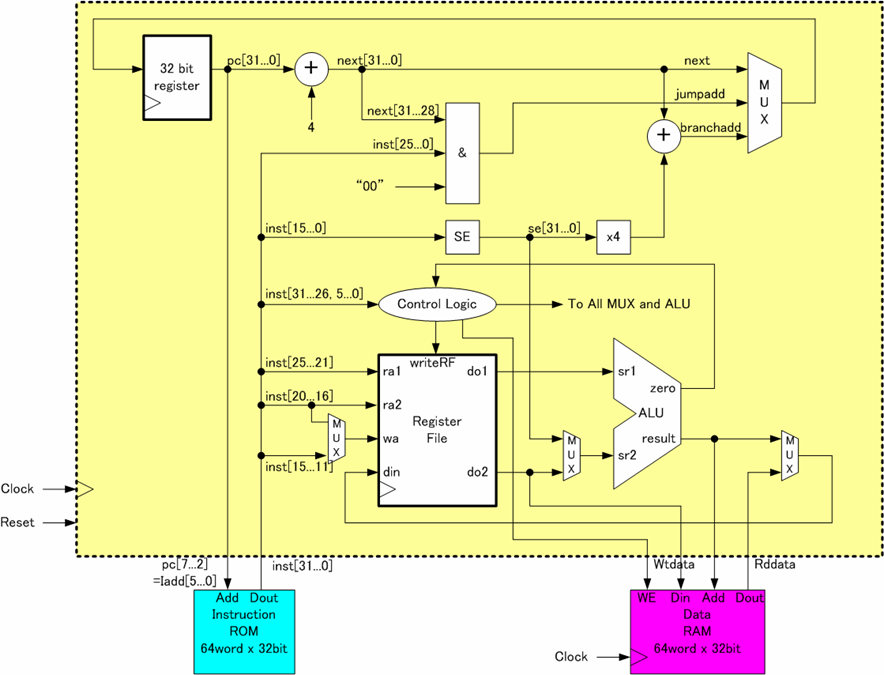
Fig. 3. SRP design example
B. Design Contest Conference Summary
The final design contest conference was held at Okinawa Industrial Support Center, Naha Okinawa on March 19th, 2009. In total, 31 student?fs teams (70 students) submitted their design to the contest. According to the pre-design selection process, 10 teams were invited to the conference presentation (See Table 4). Although basic design task is Small RISC processor design with 9 instructions, many teams tried to expand the design specification as an advanced design task. The basic SRP is actually a subset of the existing MIPS processor. Following are the advanced design tasks done by participants:
1) Expanded SRP to full MIPS compatible microprocessor,
2) One instruction per multiple clock cycles implementation to reduce circuit size,
3) Pipelined SRP design to reduce cycle time to achieve higher clock frequency,
4) Multiple data-path implementations for super-scalar SRP.
Many teams tried not only RTL design but also real implementation by Field Programmable Gate Array (FPGA). The basic Software requirement is Bubble Sort. However many teams implemented other high level Software?fs on their designed processors such as“Real time digital filter”,“Simple computer game ”. Some teams also designed not only micro processor but also key board controller and display drivers.
One interesting design is Application specific microprocessor design for sorting algorithm. They have introduced hardware acceleration circuit on to the processor core to enhance the sorting algorithms.
At the conference, design evaluation has been made based on the following three points:
1) Point of view in academic or new idea,
2) Point of view in design usefulness in real or industrial applications,
3) Point of view in FPGA implementation.
Finally, three teams are selected for each evaluation points of view as follow.
1) SIS AWRAD (IEICE Smart Info Media System) in Academic or New Idea Team Ganesha ANT from Bandung Institute of Technology (ITB), Indonesia
2) LSI of the Year Student AWARD (The Semiconductor Industry News Company) in design usefulness Team Tokyo Institute of Technology
3) Xilinx AWARD (Xilinx, Inc.) in FPGA implementation Team ?hZoiros?h from Bandung Institute of Technology (ITB), Indonesia
IV. FOR BETTER FUTURE IN SEMICONDUCTOR INDUSTRY IN ASIA
The concept of this LSI design contest idea is directly connected to the so-called Silicon Sea Belt Project designed by Fukuoka prefecture in Japan [5], [6]. Silicon Sea Belt is defined as a center of semiconductor fabrication along with South China Sea coast line countries from Korea, Kyushu in Japan, Taiwan, China, Philippine, Singapore, and continuously up to India. This area is also the world largest market of IT industry. Among this area, Fukuoka is addressing to establish a Center of Excellence for SoC design in this area. In order to boost this project, Fukuoka Institute of System LSI Design Industry [7] has been established in sea side area of Fukuoka, and LSI college [8] and Q-shu University hardware/software Borderless system design Education program (QUBE) [9] for young engineers training.
From business aspect, Ministry Education and Science and Fukuoka prefectural government are actively promoting LSIrelated company clustering based on the Knowledge Cluster Initiative (Second Stage) budget from 2007 till 2011. As a result of various approaches in the past, about 110 system LSI-related companies have accumulated in the Fukuoka area and Kitakyushu Science and Research Park. The number of these firms has increased over 5 times compared to the number at the beginning of the project. This fact is quoted from Mr.Eisaku Otsuru who is a head director of the Knowledge Cluster Initiative in Fukuoka area [11].
Prof.Kenji Onaga, who is a professor emeritus in University of the Ryukyus and Hiroshima University, has personally suggested that Okinawa can play important role in the Silicon Sea Belt Fukuoka Project because of following reasons.
1) Okinawa is the geopolitically best place since it is located at the center of Silicon Sea Belt.
2) Okinawa is only one place to get mutual understanding in various aspects and talk among Asian countries since it is only one place where they had suffered from same damage that other some Asian countries also had in WWII.
V. CONCLUSION
This correspondence has introduced a student LSI design contest http://www.LSI-contest.com/ from various aspects. It also has addressed the necessity of collaboration with LSI design contest and some other promoting activities such as Silicon Sea Belt Fukuoka Project in order to boost semiconductor industry in Asian countries. It also discussed that Okinawa can play important role in these activities because of its geopolitically suitable place. We are still suffering from world wide economical recession; however, the organizing committee would promise doing our best to promote this contest more active. We also would like to thank all readers to understand and cooperate this contest?fs aim and activity.
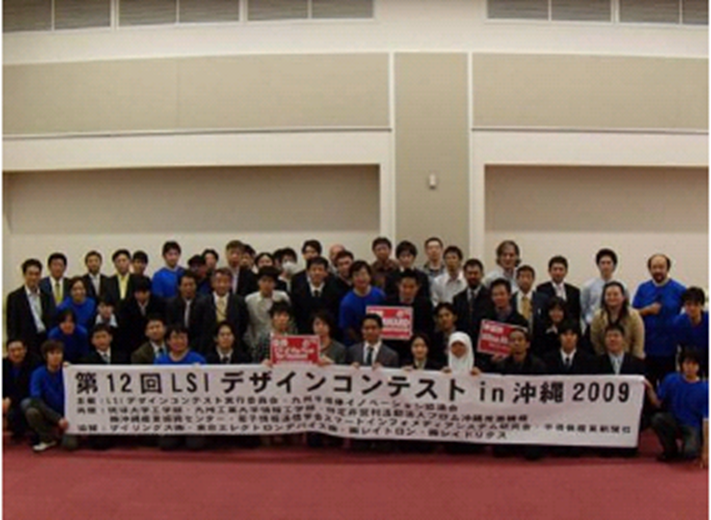
REFERENCES
[1] http://www.esri.cao.go.jp/jp/sna/kenmin/h18/soukatu9.xls
[2] http://www.stat.go.jp/data/nenkan/index.htm
[3] http://www8.cao.go.jp/okinawa/3/332.html
[4] section 5.1-5.3 of Morgan Kaufmann Publisher, ?hCOMPUTER ORGANIZATION DESIGN: the hardware / software interface 2nd?h, John L. Hennessy and David A. Patterson.
[5] http://www.ist.or.jp/lsi/pg02 01.html
[6] http://www.slrc.kyushu-u.ac.jp/japanese/presentation/p yasuura061121.pdf
[7] http://www.ist.or.jp/lsi/index.html
[8] http://www.ist.or.jp/lsi-college/
[9] https://qube.slrc.kyushu-u.ac.jp/en/
[10] http://dsp.cse.kyutech.ac.jp/HighVision/index.html
[11] http://www2.lab-ist.jp/english/
Kyushu Institute of Technology, Japan
E-mail: ochi@cse.kyutech.ac.jp Tel: +81-0948-29-7692
University of the Ryukyus, Japan
E-mail: wada@ie.u-ryukyu.ac.jp